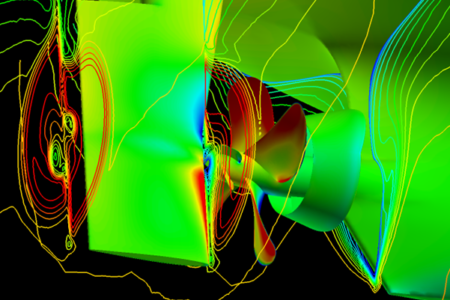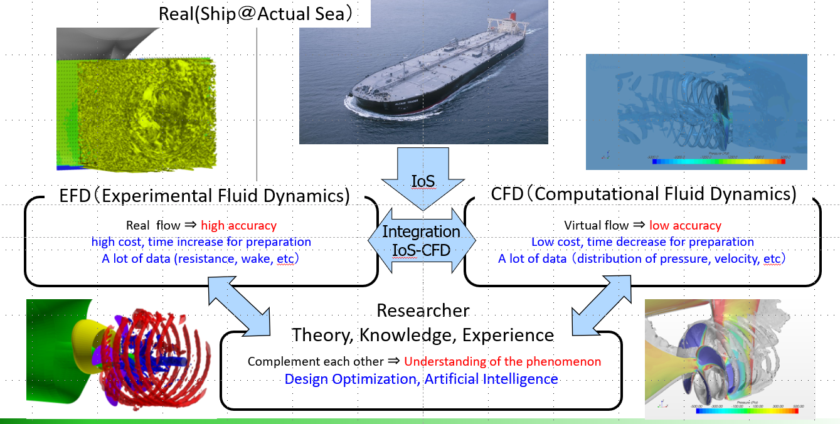We can perform Computational Fluid Dynamics (CFD) calculations corresponding to various tank tests and wind tunnel tests. CFD calculations can be used for ship design and offshore structures and various engineering services.
Computational Fluid Dynamics (CFD)
 Utilizing various tank test facilities enables us to accumulate theoretical, experimental, and CFD technology know-how related to ship hydrodynamics. We have realized various types of engineering services using the know-how.
Utilizing various tank test facilities enables us to accumulate theoretical, experimental, and CFD technology know-how related to ship hydrodynamics. We have realized various types of engineering services using the know-how.
・Wave-making performance
We conduct free surface simulations via the Rankine source method based on linear theory and via non-linear theory using various CFD software, and examine hull forms and bulbous bows.
・Propulsion Performance
We conduct simulation for flow field analyses around the hull to examine viscous resistance and wake distribution. We can also handle with complex CFD calculations that take into account propellers, energy-saving devices, sonar domes, thrusters, bilge keels, shaft brackets, etc.
・Ship Dynamics Performance
We can conduct CFD calculations simulating seaworthiness performance tests, oblique sailing tests, and PMM tests, and consider tank tests in advance. We also examine the hydrodynamic effects of various devices that improve motion performance on numerical calculations.
・Propeller Performance
We can conduct calculations simulating the Propeller Open Test (POT) and cavitation calculations and examine the propeller design corresponding to the tank test in detail.
・ Aerodynamic Performance
We conduct a wind tunnel test and a simulation of the corresponding aerodynamic characteristics to study air resistance and smoke pollution. 
Ship performance in waves can be simulated using general-purpose CFD software. CFD simulations can handle highly nonlinear phenomena such as breaking waves and wave impact.
This is an example of PMM and CFD calculations for a KCS hull form.

